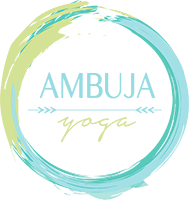Now is the time to brush up on your knowledge of chaturanga dandasana, so you can teach the pose safely. It is important to keep your student’s shoulders safe in their vinyasa yoga practice. It takes time and patience to master chaturanga.
Chaturanga has gotten a bad rep in the yoga community and has been dubbed the “shoulder shredder” and it’s not without due cause. This pose, when done incorrectly, can destroy the rotator cuff, injure the deltoids, and cause chronic pain in the upper back/neck. So why do we practice it?
Chaturanga Dandasana is an integral part of our yoga practice and when done properly builds strength and stability in the shoulder girdle and builds strength in our core. It’s important to fully master chaturanga before moving on to more advanced arm balances and inversions.
I’ve broken this post down into a few sections. I encourage you to read through all of the sections as there are many components to chaturanga dandasana.
Alignment Cues and Teaching Tips for Chaturanga Dandasana
As always, remember to build the posture from the ground up. A stable and strong posture needs a strong and sturdy foundation.
- Hands are shoulder width distance.
- Fingers are spread wide.
- Press down through knuckles of index finger and thumb (hasta bandha)
- Start from Plank Pose with the feet hips width distance.
- Press forward onto your toes, so your heels stack over your toes.
- Lower halfway down to create a 90 degree angle at the elbows.
- Elbows stay in close to the body. Don’t let them wing out to the side.
- Stretch the crown of your head forward and create a long line from the heels out through the crown of the head. Draw your tailbone down toward your heels.
- Draw the navel in toward the spine to support the lower back.
7 Tips to Keep Your Student’s Shoulders Safe When Teaching Chaturanga Dandasana:
- Keep your hands shoulder width distance, fingers spread wide and press down into the base knuckles, particularly of the thumb and index finger.
- As you begin to lower down make sure your elbow points are pointing straight back behind you. They are not “winging” out to the side or “squeezing” into the sides of your rib cage. Remember: CHATURANGA IS NOT A PUSH UP! When the elbows wing out to the side the heads of the arm bones dip down, the shoulders round and the sternum sinks.
- Only lower half way down, to create a 90° angle at the elbow ie. your forearm is perpendicular to the floor and your upper arm is parallel to the floor.
- Think of drawing the shoulders away from your ears in Plank Pose and as you lower. Try not to collapse between the shoulder blades. Try to keep the shoulder blades on your back.
- Keep your core strong, press back through your heels, lift the fronts of your thighs and draw the navel in. Stretch the crown of your head forward, gaze is only slightly forward and down (don’t let the head hang).
- As you move from Plank Pose to Chaturanga press forward on your toes as you lower down, this will set you up for Upward Facing Dog.
- As you work on building strength it’s important to honor your body where it is TODAY, not where you want it to be. It’s okay to lower your knees down to the mat, so you can slowly and safely move through your chaturanga. You can also practice chaturanga at the wall.
Benefits of Chaturanga Dandasana
- Strengthens wrists, arms (triceps!), and shoulders
- Strengthens and tones the entire body (hello legs!)
- Prepares the body for arm balances and inversions
Contraindications for Chaturanga Dandasana
- Shoulder or wrist injury
- Pregnancy (although this is debatable)
I hope you find these tips helpful. Please feel free to message me if you need more clarification. I’m always happy to help.
Love and Light,
Autumn
- 2024’s Most Inspiring Books on Yoga, Motherhood, and the Path of Transformation - March 28, 2024
- Gratitude Revolution: Simple Ways to Spark Joy in Your Life - November 21, 2023
- Yoga and the Immune System - May 17, 2021

 Ambuja Yoga
Ambuja Yoga 
